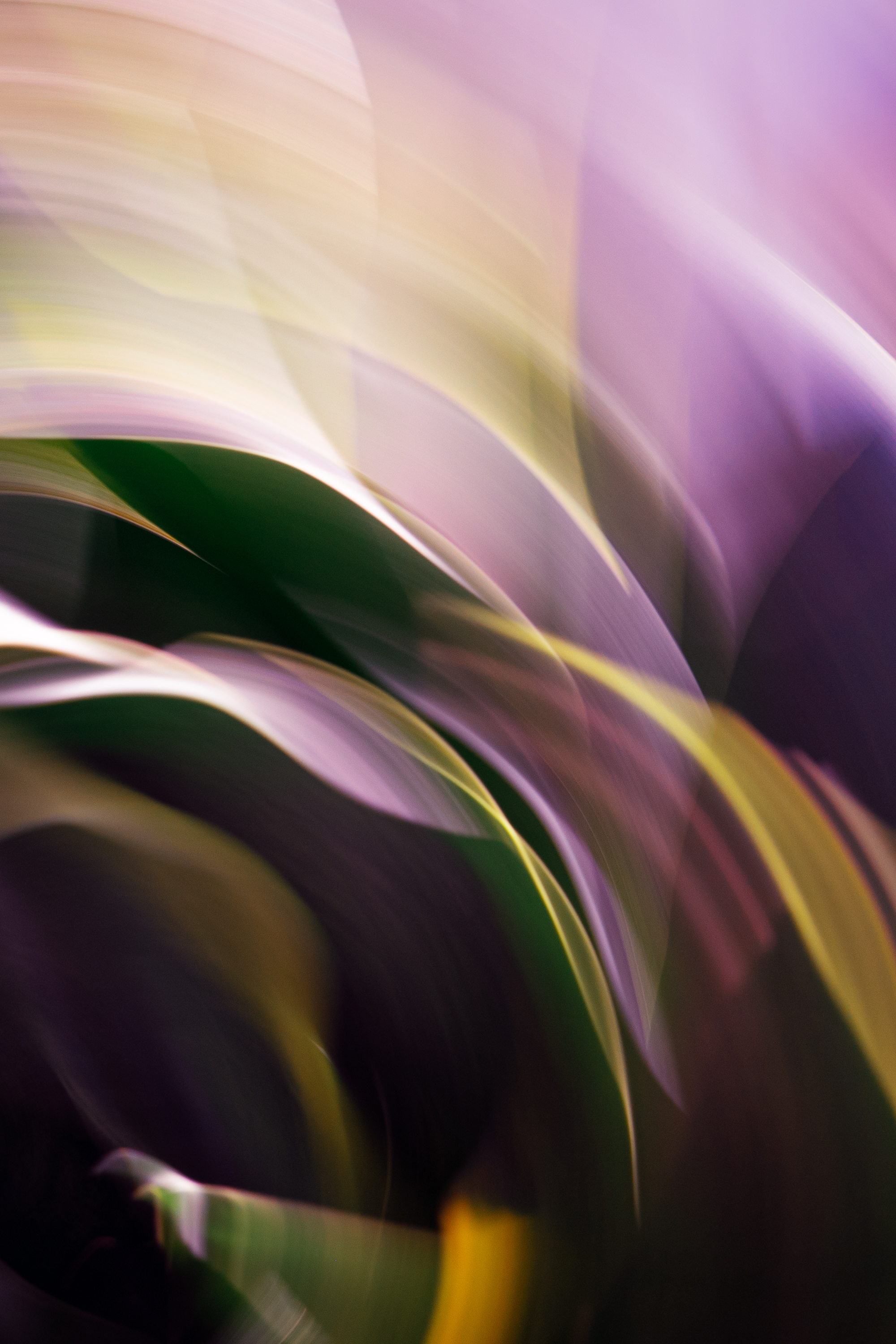All images by Jayna Ho. Used with permission.
My name is Jayna Ho. I’m a self-educated photographer who creates abstract and impressionist images. For the last year or so, I’ve focused on using ICM (intentional camera movement) techniques as a means to explore creatively. I love that each image is a unique amalgamation of movement, light, and color.
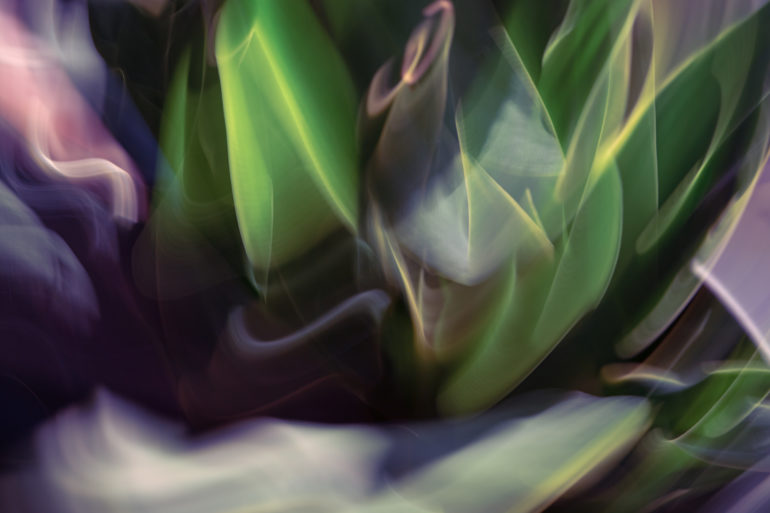
I’m drawn to using my plants as subjects. Partly, it’s because I’ve been locked down in my apartment for the past year, and these are readily available to me. But they also are naturally full of colors, patterns, and textures. I also love a good excuse to buy flowers at the grocery store.
When I’m shooting, I am always trying to visualize how the movement and subject will interact. But it’s also an experiment in curiosity. To some degree, there’s always an element of surprise to this style of photography, which is part of the fun. I find it fascinating how motion interpolates light on the camera sensor as textures and gradients of color.
I shoot with a Panasonic GH4, and I currently have just one lens – a 25mm f1.7 prime. I use Lightroom for post-processing, although the majority of an image happens in camera. In edit, I’ll focus on highlighting the interplay of light and color using creative color balance, tone curve edits, and split toning. I have two spaces in my home where I work – one using natural light, and the other is a small area with two lights and a backdrop. Although I prefer using natural light, where I work is largely dependent on what time of day it is.
Why did you get into photography?
Photography is my creative outlet. As a medium, it challenges me both technically and artistically. It engages my curiosity, my mind, and my inner child. It’s something I could spend the rest of my life learning, and still not exhaust.
Which photographers are your biggest influences?
Julieanne Kost is someone whose photos have a great presence to them. I’ve certainly referenced her Lightroom tips more than once. I also interact with a great group of Instagram photographers who happen to take ICM photos, and I’m always amazed and inspired by the diversity of images they present.
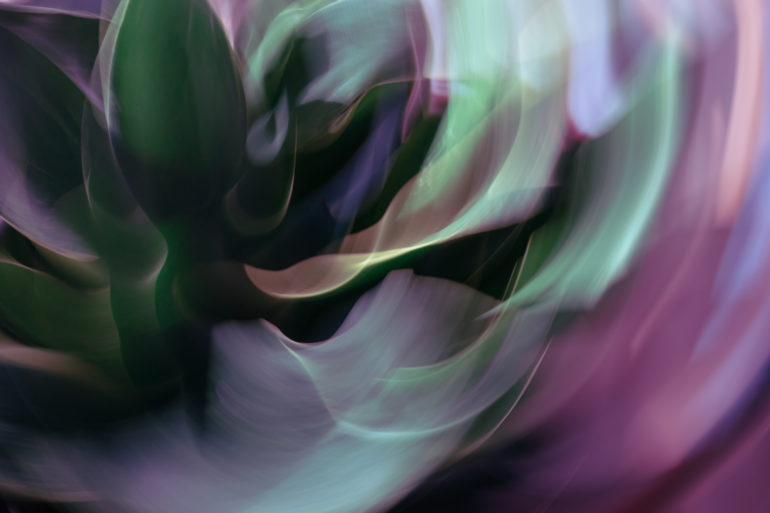
How long have you been shooting?
I have been shooting for a couple of years now. I struggled at the beginning to identify my voice and style. My early shots had no sense of coherence as a body of work. Over time, I’ve come to understand my own stylistic preferences, and how to translate that into the images I’ve made.
Photographic identity
Photography has given me a sense of being able to question what is possible, and it engages my imagination. At the heart of me is a person who just loves learning, and I want my work to embrace that sentiment.
Gear
I shoot with a Panasonic GH4, my 25mm F1.7 prime lens, and a hand strap from Peak Design. I like the mirrorless, MFT form factor because of it’s lighter weight and smaller lenses. The hand strap is a great addition, as the camera is locked to my hand and reduces the likelihood that I’ll drop my camera while shooting with motion.
Natural/Artificial light
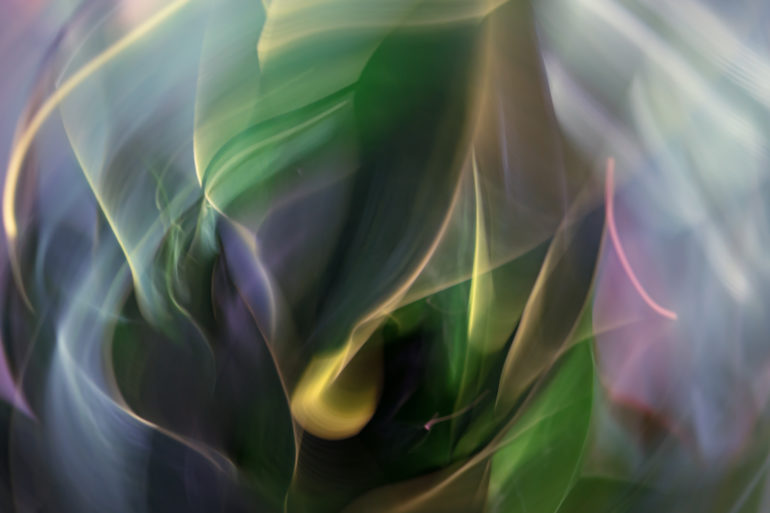
I have such a preference for natural light. It can be so fleeting, it really demands your immediate attention. However, as I am also a night owl, I also have a studio-style setup so I can work when I feel like it.
Why is photography important?
Photography gives me a place to embrace curiosity and a sense of play.
How does the gear help?
I wouldn’t necessarily argue that any of my gear is specifically needed for ICM photography. Any camera with manual settings would work.
What is going through your mind when you create images?
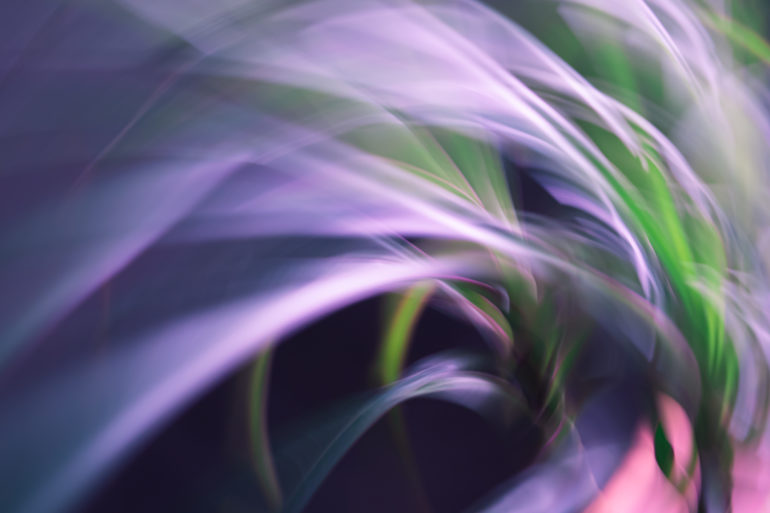
Creation is a two-step process to me. When I’m behind the camera, I tend to work in a stream of consciousness process – I easily lose track of time. I’ll try different angles to the subject, different camera motions, moving physically around the subject. I’ve found 1/10 sec to be my preferred shutter speed for the effects I want to create, and will adapt the other settings around the light available. I prefer to stay at F5 and smaller, so I get a rich mixture of detail and color field.
The second step is editing, which is a more technical process for me. I’m evaluating each image for its composition, the relative balance of light and color, and what has been captured of the original subject. I use Lightroom to develop the RAW images, and have been experimenting with tone curves and split toning to adjust colors in the images until they speak to me.
Processing Techniques
My images are all single exposures, made in-camera, so the processing is really happening in Lightroom. I prefer to shoot in full manual. I develop each image individually, and I’m looking for the color values which best emphasize the feelings I want to communicate. Sometimes, I know exactly what I want to do with an image. Other times, I might make multiple versions over days and still not be satisfied with the outcome.
Describe the portfolio of work
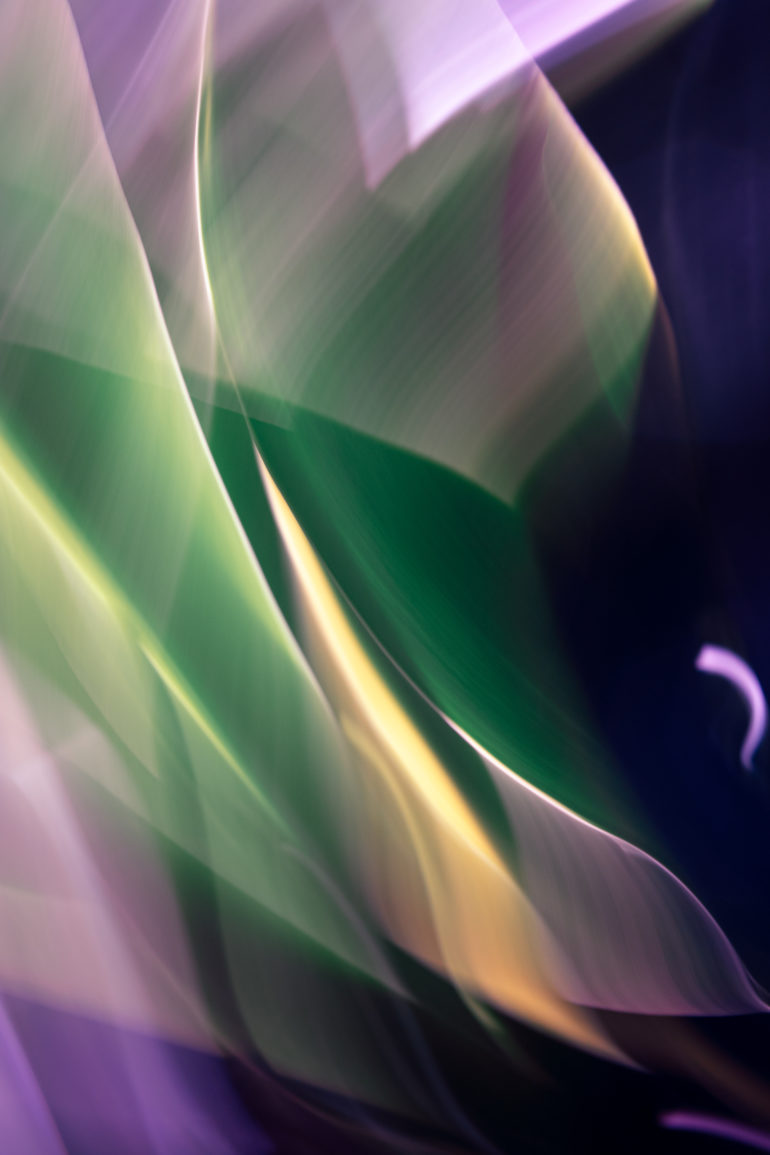
This selection of images are some of my favorites from the last year and best represents my larger body of work. They share an amorphous quality, without any distinct shapes. Colors blend freely, and motion draws the eye.
What made you get into your genre?
There’s an ambiguity of meaning in abstract work that I like to engage with.
What motivates you to shoot?
Sometimes, I get this image in my head and I have to wander off to my work area and see if I can make it. Sometimes, it’s the sparkle of sunlight at just the right angle to catch my attention.
Why should someone want to see your work?
I want to find new ways to see my everyday surroundings with light.
You can follow Jayna Ho on Instagram. Got a cool project that doesn’t involve Photoshop? Here’s how you can submit it to be shared.


